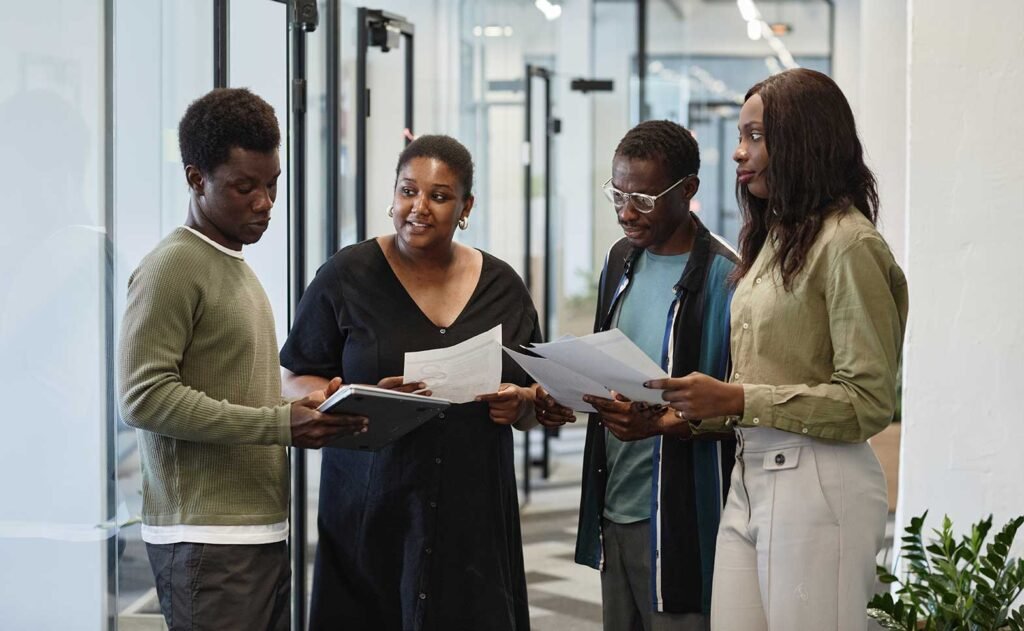Training has long been the default response when leaders identify a skills gap. Send employees to a workshop, host a motivational seminar, distribute manuals, and expect performance to soar. Yet many organizations discover that, once the early enthusiasm fades, real change does not stick. Productivity stalls, new systems gather dust, and the same challenges resurface during the next quarterly review.
Capacity building is often mistaken for training, but the two differ in scope, depth, and impact. Training transfers knowledge and skills to individuals. Capacity building strengthens the organization itself, aligning people, processes, resources, and culture with strategic goals. In a world shaped by rapid technological shifts, complex regulations, and climate pressures, enterprises cannot afford shallow fixes. They need transformation that reaches every layer of the enterprise.
This article explores why capacity building must evolve, what true organizational transformation looks like, and how leaders can move from isolated learning events to systemic change that endures.
The Limits of Traditional Training
Traditional training excels at immediate skill transfer. A marketing team might learn to use analytics software, or a finance department might update its IFRS knowledge. These interventions are valuable, but they rarely address root causes of persistent underperformance, such as siloed communication, weak governance, or outdated systems.
Common shortcomings include:
Short time horizon: Workshops last a day or two, then employees return to heavy workloads that leave no room for practice.
Low contextual relevance: Off‑the‑shelf courses cannot reflect local realities or unique organizational dynamics.
Limited accountability: Once certificates are handed out, it is unclear who owns follow‑through or how learning ties to key performance indicators.
Isolated participants: When only a few staff attend training, knowledge stays in pockets instead of spreading across teams.
These gaps explain why training budgets can rise while performance indicators stagnate. Without structural support and cultural reinforcement, new skills do not translate into sustained results.
Defining Capacity Building in the Modern Context
Capacity building refers to the process through which organizations improve their ability to perform core functions, solve problems, and adapt to change in pursuit of their mission. It encompasses four interdependent pillars:
People: Competent staff, motivated leadership, and inclusive teams
Systems: Clear procedures, robust technology, and data‑driven decision‑making
Resources: Diversified funding, efficient asset management, and agile budgeting
Culture: Shared values, continuous learning, and accountability mechanisms
True capacity building goes beyond single interventions. It integrates all four pillars into a coherent strategy, then tracks progress over time.
Shifting Mindsets: From Training Provider to Transformation Partner
A transformational approach demands a new mindset among both internal leaders and external consultants. Instead of asking “What workshop can we deliver?” the guiding questions become:
Which strategic outcomes are we trying to achieve over the next three to five years?
What competencies, processes, and cultural shifts are required to achieve those outcomes?
How will we embed, reinforce, and measure change at individual, team, and organizational levels?
This shift turns training vendors into long‑term partners who co‑design roadmaps, coach leadership teams, and build internal champions who sustain change long after outside facilitators leave.
The Building Blocks of Organizational Transformation
Leadership Alignment
Transformation begins at the top. Executives must agree on a shared vision and allocate resources accordingly. Alignment workshops, leadership coaching, and clear governance structures ensure that strategic direction remains consistent.
Systems and Process Redesign
New skills cannot thrive within outdated workflows or rigid hierarchies. Process mapping, technology upgrades, and cross‑departmental collaboration spaces create an environment where innovation can flourish.
Learning Loops
Instead of one‑off sessions, organizations establish continuous learning loops. These loops combine on‑the‑job coaching, peer feedback, mentoring programs, and digital learning platforms. As employees apply new techniques, they receive immediate input and iterate quickly.
Cultural Reinforcement
Change holds only if it becomes part of organizational identity. Culture‑building initiatives include recognition programs, storytelling, and integration of new values into recruitment, performance reviews, and reward systems.
Measurement and Adaptation
Transparent metrics track progress against strategic goals. Dashboards, pulse surveys, and periodic evaluations reveal what works and where to adjust. Measurement keeps transformation on course and demonstrates return on investment to stakeholders.
"Training may light the spark, but only holistic capacity building keeps the fire burning and drives lasting transformation."
Practical Steps to Start Your Transformation Journey
Conduct a Capacity Assessment: Use frameworks like McKinsey’s Capacity Diagnostic or UNDP’s Capacity Assessment Methodology to map current strengths and gaps.
Set Clear Transformation Goals: Align goals with strategic priorities, for example digital readiness, climate resilience, or inclusive leadership.
Develop an Integrated Roadmap: Outline initiatives across people, systems, resources, and culture, assigning responsibilities and timelines.
Secure Leadership Commitment: Obtain budget approvals, establish a steering committee, and communicate vision across the organization.
Launch Quick Wins: Early successes build momentum and demonstrate value. Quick wins might include a pilot digital tool, cross‑functional problem‑solving sprint, or targeted coaching.
Build Internal Champions: Identify employees who model new behaviors and empower them to mentor others.
Monitor and Adapt: Use key performance indicators, feedback loops, and quarterly reviews to refine strategies and celebrate achievements.
The Role of Technology in Capacity Building
Digital tools accelerate transformation when integrated thoughtfully:
Learning Management Systems deliver personalized content at scale.
Collaboration Platforms break down silos and support remote teams.
Data Analytics reveal performance patterns and guide decision‑making.
Automation frees staff to focus on strategic tasks rather than repetitive work.
However, technology alone is not a silver bullet. It must align with processes and culture to create real value.
Measuring Impact for Continuous Improvement
Impact measurement provides evidence that transformation efforts are working. Consider metrics such as:
Employee retention and engagement scores
Process cycle times and error rates
Financial indicators like cost‑to‑serve or revenue per employee
Customer satisfaction and loyalty indices
Innovation outputs, for example new products or process improvements
Regular reporting keeps leaders informed and fuels a culture of accountability.
Conclusion: From Skills to Systems, From Moments to Movements
True organizational transformation demands more than periodic training events. It requires a comprehensive approach that weaves new skills into processes, aligns leadership with culture, and measures progress relentlessly. When capacity building evolves into an integrated strategy, organizations unlock resilience, agility, and sustained growth.
Ruane International Limited supports enterprises through every phase of this journey, from capacity diagnostics to leadership coaching and digital integration. Together we can transform training moments into organizational movements that deliver lasting impact.



